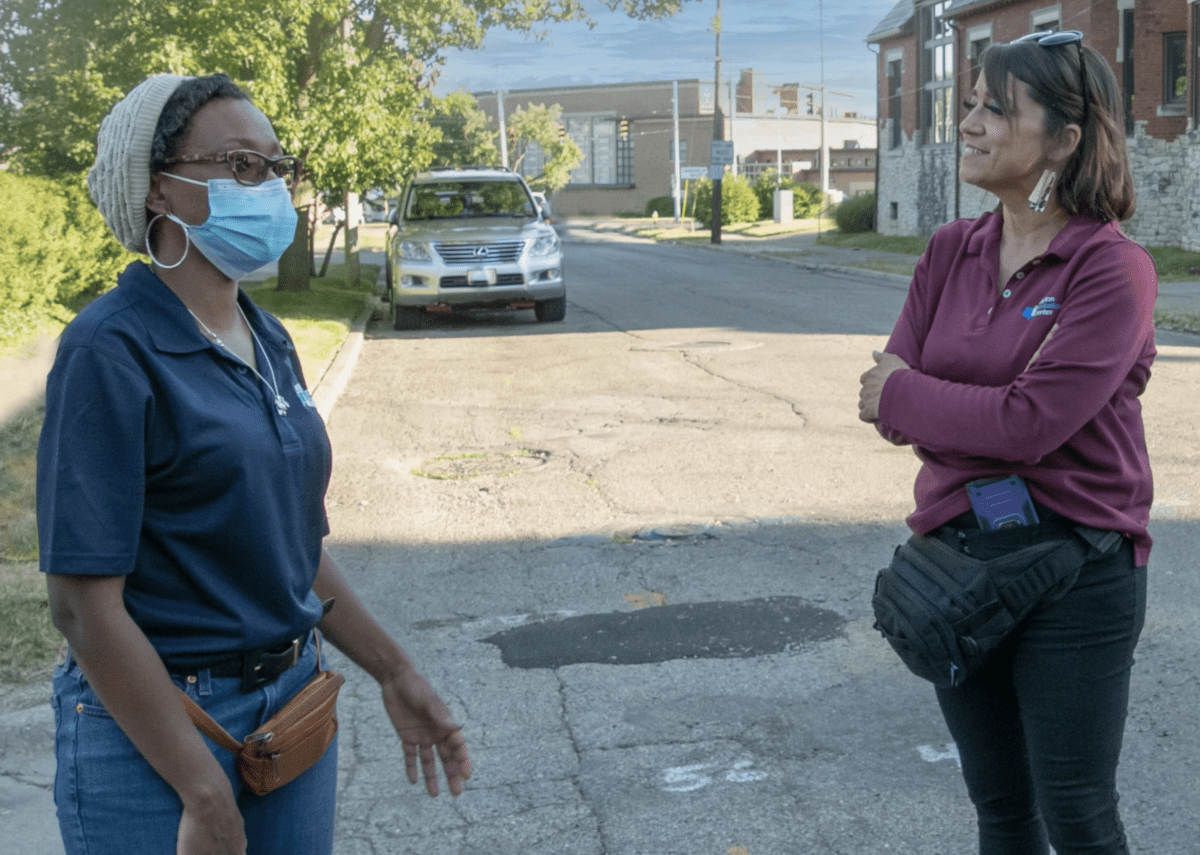Albuquerque created its Community Safety department in 2020. Community Safety is its own city department, like the fire department or the police department, and is considered the city’s third branch of public safety, Ruiz-Angel said. It is one of the largest crisis response programs in the country, with 130 employees. When a call comes into 911 that the Community Safety department is eligible to respond to, dispatchers will send one of three types of Community Safety teams.
In Dayton, Ohio, the city established a Mediation Response Unit (MRU) in 2022 to respond to low emergency 911 calls, such as calls involving disputes between neighbors, child custody exchanges, or barking dogs, Raven Cruz Loaiza, a coordinator for the program, said in an interview. The MRU is small—just seven members—and is a program under the umbrella of the Dayton Mediation Center, a city agency. MRU members are unarmed and wear black pants and maroon polos with “Mediator” written on the back. The goal is to resolve conflicts between community members without police involvement.
While many crisis response programs are new, they’re already delivering results. Since it began operating two years ago, the Albuquerque Community Safety (ACS) department has diverted more than 33,000 calls from the city’s police department, according to data shared with The Appeal. In a significant portion of ACS calls, the department connected the person in crisis to service providers—such as shelters or substance use programs—instead of jail cells. A 2022 Stanford University study of Denver’s crisis response program found that reports of low-level crimes fell by 34 percent in neighborhoods where the city’s Support Team Assistance Response (STAR) program operated. The study also suggested that the crisis-response team saves taxpayers money, as incarceration is more expensive than treatment and support services.



I’ve made NO false assumptions, there’s nothing FALSE about me taking the numbers that the article gives and doing basic math with it to try and find what the real value of the service is. The numbers given show results so woefully weak that it doesn’t matter if you 8x the results I got, which I’ve already outlined. I am not showing something in any light other than how it was presented to me, if you don’t want it in that light then you need to yell at the article writer for doing a piss poor job.
So when I said “even if you 8x”… I didn’t account that there could be additional workload? Not at all! Oh boy I must be fucking retarded then cause I swear that’s what I read in my post. I guess words just don’t have meaning.
Taking even your infographic where they claim that they’ve done 3296 calls (both diverted calls and other sources) in Sep 2023. That’s still REALLY bad. 30 day month where you’d expect workers to work about 20 of those days. 3296/130/20… a mere 1.27/working day/worker AT BEST. Or an average case load of 6 hours and 18 minutes per case. Do you think that it takes 6 hours to drive out to a house/apartment and conduct a welfare check (keep in mind that a good amount of these calls will be non-issues where they walk up to the door, knock, talk to the person for 10 minutes and leave)? Adding more information narrows down your argument that I don’t have sufficient information, therefore it must be good! Yet we still come up with REALLY BAD numbers as it gets adjusted with your moving goalposts.
You seem to be completely misunderstanding my point. That’s on you.
As I said. I’m all for it. But it needs to do better if it’s going to stick around.
Article states:
Your assumption: they have always had 130 employees.
Reality: In FY 21, they had funding for 18 people, in FY 22 they had the funding for 61 people.
That sure does seem like an assumption that turned out to be false.
That’s a good point - how did you come up with that number? Also, how did you come up with an acceptable number of diverted calls? Did you compare the value to those of the programs peers?
Okay, let’s make sure our homework is done again. How many people do you know we’re employed at this time? Should your analysis be qualified as a worst case value? How many folks do you think should be on call?
Lmao, it can say a lot about your approach if real world corrections to the initial values are considered moving goalposts. If your focus is on being “right” in the context of the article regardless of being wrong in the context of real life, I can see that being upsetting.